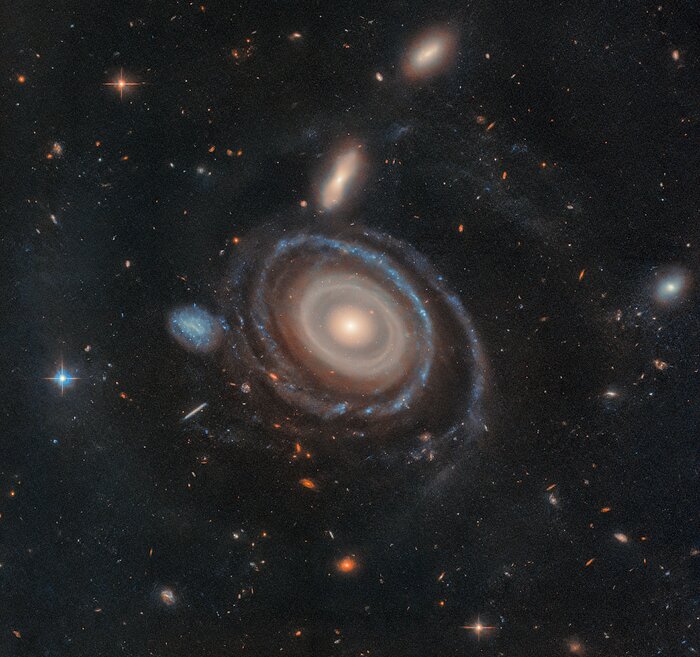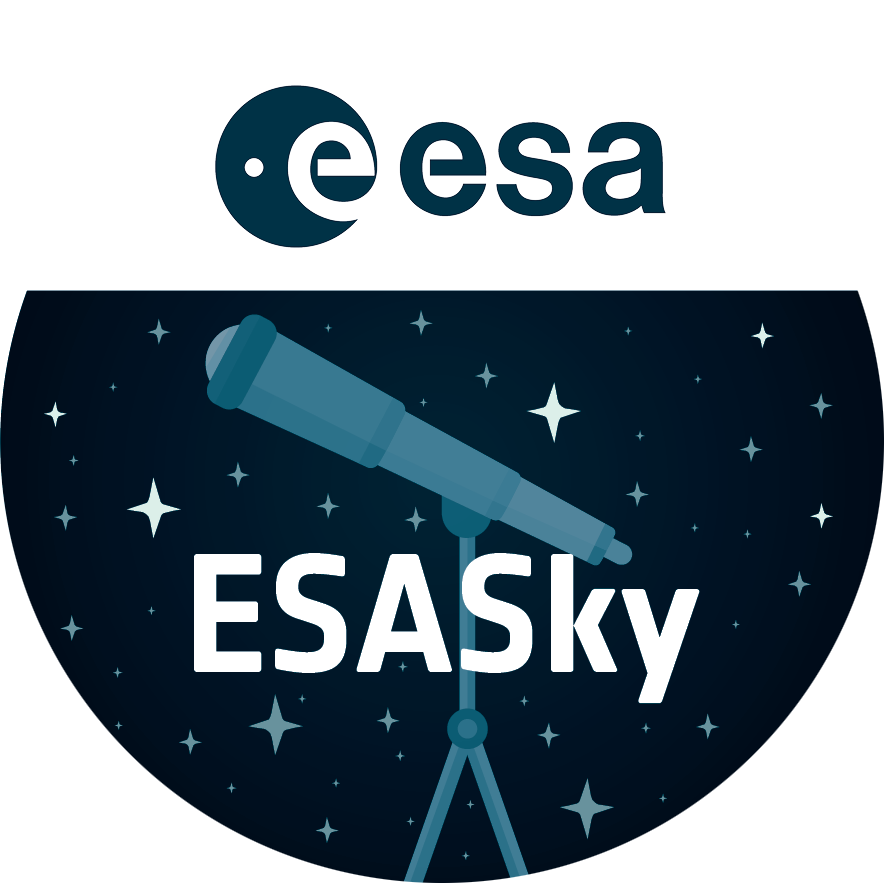Galaxy LEDA 1313424
High-resolution imagery from the NASA/ESA Hubble Space Telescope has allowed researchers to hone in on more of the Bullseye galaxy’s rings — and helped confirm which galaxy dove through its core.
LEDA 1313424, aptly nicknamed the Bullseye, is two and a half times the size of our Milky Way and has nine rings — six more than any other known galaxy. Hubble has confirmed eight rings, and data from the W. M. Keck Observatory in Hawaii confirmed a ninth. Hubble and Keck also confirmed which galaxy dove through the Bullseye, creating these rings: the blue dwarf galaxy that sits to its immediate center-left. This relatively tiny interloper traveled like a dart through the core of the Bullseye about 50 million years ago, leaving rings in its wake like ripples in a pond. A thin trail of gas now links the pair, though they are currently separated by 130,000 light-years.
The team’s paper was published on 4 February 2025 in The Astrophysical Journal Letters.
Credit:NASA, ESA, I. Pasha (Yale), P. van Dokkum (Yale)
About the Image
| Id: | opo2506 |
|---|---|
| Type: | Observation |
| Release date: | 4 February 2025, 16:00 |
| Size: | 3843 x 3607 px |
About the Object
| Name: | LEDA 1313424 |
|---|---|
| Constellation: | Pisces |
| Category: | Galaxies |
Classic Wallpapers
Coordinates
| Position (RA): | 0 9 39.39 |
|---|---|
| Position (Dec): | 7° 4' 48.84" |
| Field of view: | 3.20 x 3.01 arcminutes |
| Orientation: | North is 29.7° left of vertical |
Colours & filters
| Band | Wavelength | Telescope |
|---|---|---|
| Optical g | 475 nm |
Hubble Space Telescope
ACS |
| Optical I | 814 nm |
Hubble Space Telescope
ACS |


